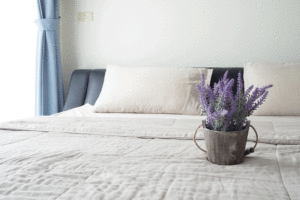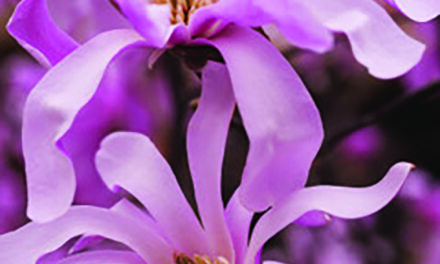
Because it is nontoxic to children and pets, lavender also provides an additional benefit to the sleep-deprived who share homes with both: Peace of mind.
Do you have trouble falling asleep, staying asleep, or getting enough sleep?
If you do, you’ve got lots of company. You’ve also got a slew of experts studying the problem, plus plenty of wellness prophets hoping to sell you on their solutions.
If you’re too sleep-deprived to schedule a sleep study (the University of Maryland Shore Health System in Easton has a Sleep Study Center), and already tried counting sheep, popping pills and yoga stretching to relaxation videos with no luck, don’t despair, especially if you’re a plant lover.
Lifestyle magazines and websites have been heralding promising news of houseplants helpful in catching elusive Zs.
And the National Institute of Health has published studies suggesting that they might be on the right track, as has NASA.
With sleep so vital to overall health, it’s worth noting that environmental Psychologist Sally Augustine, writing in Psychology Today, cited scientific evidence that indoor plants boost mood and overall wellbeing. (If you grew up in a desert environment the associated positive associations inherent in cacti and succulents may work, she suggested, otherwise stick to leafy green botanicals.)
The right houseplant may lead to improved sleeping conditions in several ways — by emitting oxygen at night, by purifying the air of pollutants and toxins, and by aromas which, when inhaled, biologically help you de-stress, relax and rest, all of which theoretically should help induce rest.
For aromatherapy and essential oil adherents, the nose knows, and some NIH journal publications seem to corroborate this view.
One article, describing the effects of Lavender in a study, wrote that it:
“… Increased the percentage of deep or slow-wave sleep in men and women. All subjects reported higher vigor the morning after lavender exposure, corroborating the restorative SWS increase. Lavender also increased stage 2 (light) sleep, and decreased rapid-eye movement sleep and the amount of time to reach wake after first falling asleep (wake after sleep onset latency) in women, with opposite effects in men. Thus, lavender serves as a mild sedative and has practical applications as a novel, nonphotic method for promoting deep sleep in young men and women and for producing gender-dependent sleep effects.”
Veteran garden writer and master gardener Jon VanZile suggests Dwarf French Lavender as a practical version for the houseplant remedy.
Because it is non-toxic to children and pets, lavender also provides an additional benefit to the sleep-deprived who share homes with both: peace of mind.
Sweet smelling Jasmine has also been studied and its scent shown to be highly effective for helping induce sleep plus easing ailments such as aches and anxiety which can inhibit sleep (fun fact: it’s also believed to be an aphrodisiac.)
According to the ASPCA, Jasmine is non-toxic to dogs, cats, and horses.
Another bedroom specimen safe around kids, kittens, and dogs, and likely to be in many homes over the upcoming holiday season, is Christmas cactus.
In addition to purifying the air from common harmful chemicals found in modern homes and other buildings, the Christmas cactus emits beneficial oxygen during the night, which factors into positive sleep results, according to VanZile.
While they haven’t been studied to the extent of lavender and jasmine, Gerbera or Barberton Daisy also releases nighttime oxygen and is nontoxic.
Among the many other benefits bestowed by NASA explorations, a landmark 1989 study found specific houseplants reduced the presence of formaldehyde, universally used for indoor construction materials, furnishings and cleaning products.
The study cited formaldehyde as a major contributor to mucous membrane irritation of the upper respiratory system, the eyes, headaches and asthma, all of which impede sleep.
The researchers listed 13 plants that are helpful:
Banana, Mother-in-Law’s Tongue (aka Snake Plant), English Ivy, Heart Leaf, Lacy Tree, & Elephant Ear Philodendrum, Green Spider Plant, Golden Pothos, Janet Craig (aka Dracena), Marginata, Peace Lily, Chinese Evergreen, and Aloe Vera.
Despite these advantages, many listed above have been found harmful for children and animals, so be sure and do your homework before selecting.
Want to learn more? Fix a soothing cup of chamomile tea, curl up in your favorite bedroom spot, water your plant, and order the following books from your library or book seller: Healing Houseplants by Michelle Polk (author of Houseplant Girl blog) and Houseplants for a Healthy Home by Jon VanZile.




